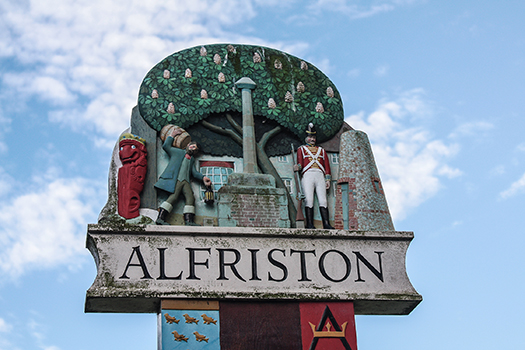 |
| Village Sign |
 |
| Village Sign |
 |
 |
|
| St. Andrew's, Alfriston | The Nave | |
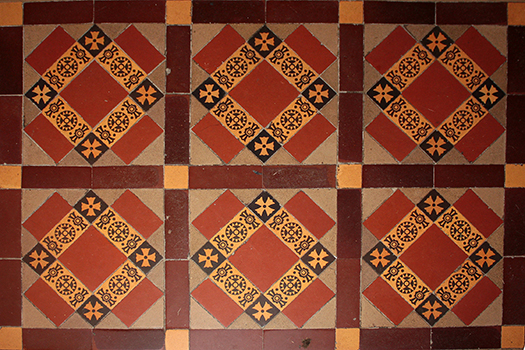 |
 |
|
| Floor tiling | Fisherman window |
The parish church at Alfriston is St. Andrew's, which sits in the middle of the village green, or Tye, near the river Cuckmere. It has Saxon origins but was re-built mainly in the 1370s. It is a Grade I listed building. A list of incumbents on the wall shows the first rector as William de Mari in 1318 and the last, in 1400. The land which supported the incumbent, was known as the "temporalities of the living" where the word "living" in this context means the post with its income from associated land. The living and the church were given by Henry IV to the prior and convent of Michelham, which appointed then John Carlton as the vicar. Note that a Rector is the incumbent of a parish which is financially independent with income from its own assets, whereas a vicar is put in charge when the parish is supported or under the protection of a priory, a university college or by the diocese.
Close by is the 14th century Clergy House, which, in 1896, was the first property acquired by the National Trust. It is an example of a Wealden Hall House, with timber-frame and thatched roof.
The village itself has a number of charming vernacular buildings, a market cross and three pubs, the Star Inn, the Smugglers' Inn and the George Inn. Three miles south of the village is the beginning of the Seven Sisters Country Park with the South Downs Way leading east to Beachy Head.
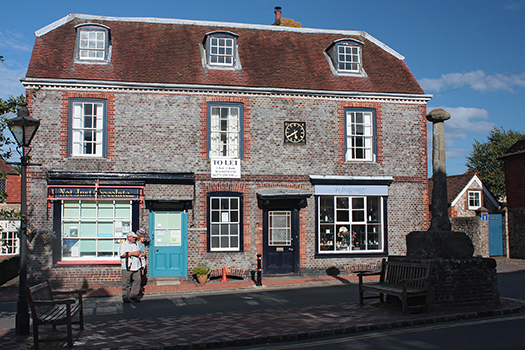 |
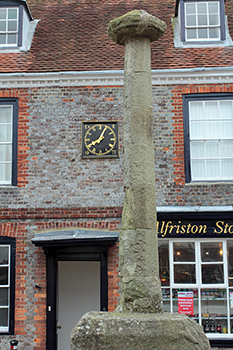 |
|
| Shops with Market Cross | Market Cross, Feb 2012 | |
 |
 |
|
| Shops | The Flint Tower | |
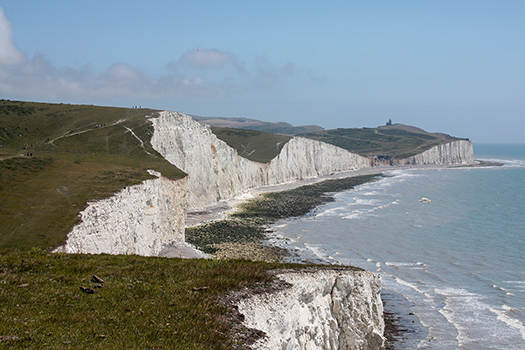 |
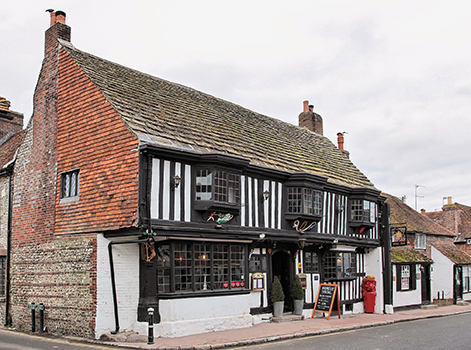 |
|
| On the Seven Sister Cliffs looking East | Star Inn, Feb 2012 |
Wikipedia Article on Alfriston